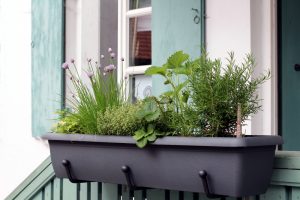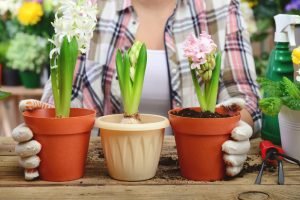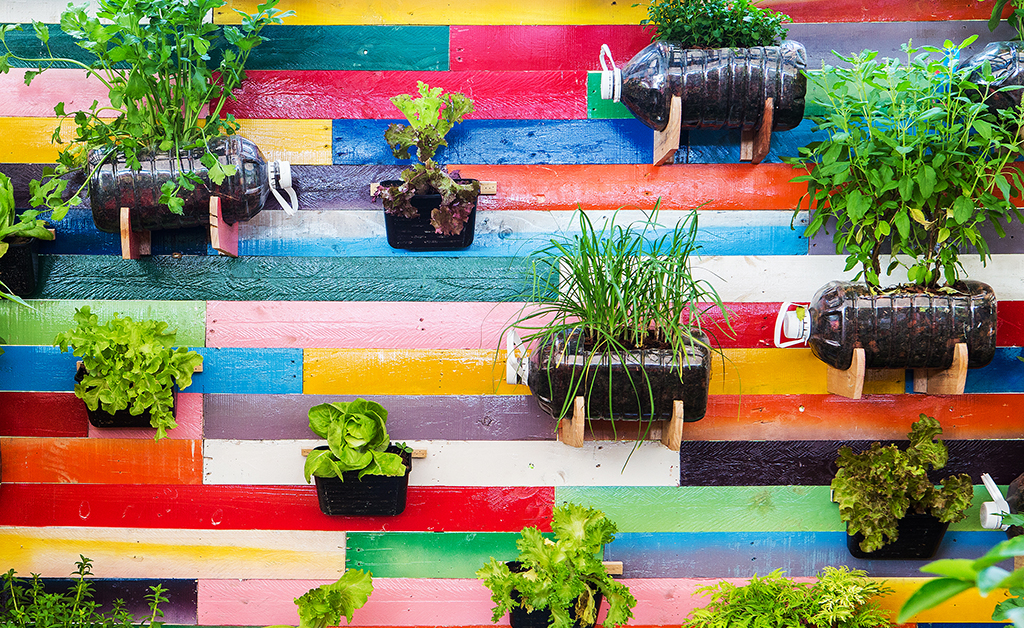The very best methods for growing container gardening vegetables
There’s no better time to start planting than in spring. Gardening vegetables in a container is a great way to grow healthy food and an easy way to add some color to porches or around windows. To help you get started, we’ve put together a list of some of some of the best methods for gardening vegetables in containers.

Window boxes
Are you short on yard space? Do you lack a front porch? Then a window box might be the perfect solution! Vegetables often need between six and eight hours a day of sunlight, so just make sure your window boxes get enough light.

Clay pots versus plastic
Clay pots are arguably more attractive than plastic pots. They are often more expensive and dry out faster in the sun. With that said, if you decide to invest in clay pots, consider having it glazed to hold water. If you prefer the unglazed look, a trick of the trade is to insert a plastic pot into a one made of clay.

Hanging baskets
Similar to window boxes, hanging baskets are a great way to add a splash of healthy color to your home. Although dwarf and cherry tomatoes are fruits, not vegetables, they are popular plants to grow in hanging gardens. Herbsare also ideal for hanging baskets and can be planted on the edges.

Be creative!
Vegetables will grow in just about any container. Don’t limit yourself to using just pots, boxes or baskets bought from garden supply stores. Old paint cans or gallon milk jugs work well for root vegetables such as carrots or radishes, while large containers such as wooden barrels or even bathtubs can grow an enormous amount of food, including vegetables such as corn and tomatoes. Repurposing old containers found around the house is a great way to give your home a rustic do-it-yourself vibe. You can even paint your containers to make them even more beautiful. Just make sure to puncture a few holes into the bottom of whichever container you’re using so that the soil can drain properly.
What vegetables grow the best in containers?
Regarding the best vegetables to grow in containers, the sky's the limit! Of course, the container you choose to use might cap the sort of vegetables you grow. For example, a one gallon container won’t provide enough space for carrots.
Before gardening your vegetables in a container, you’ll want to think about when you’d like to plan your harvest. Some vegetables, like radishes, grow quickly and can be harvested twice per season. Other plants, such as corn (which officially is a grain!), can only be harvested once per season. You may want to grow a blend of slower and faster growing vegetables in the same container to ensure you have vegetables throughout the entire season.

Don’t forget edible flowers!
While not exactly a vegetable, edible flowers definitely have their place on your plate. They also add a gorgeous burst of color to any window box. Nasturtiums are among the most beautiful edible flowers, as are calendula flowers. Also called marigolds, the flowers have a sharp, sometimes peppery taste and are a nice addition to salads or as beautiful garnishes.
Caring for your vegetables
You’ve chosen your containers and decided which vegetables you’d like to grow. Now’s the fun part: raising your healthy plants! Here are a few failsafe tips:
- Many plants will need to be watered twice a day. The best time for watering is in the morning or evening.
- Some plants, such as peas, will need stakes to support vines as they grow upward.
- If you’re painting a container, try not to paint it a dark color, which absorbs heat.
- Don’t use soil dug up from your yard. Gardening vegetables in a container requires soil that is an equal mixture of potting soil peat moss, perlite, vermiculite or sand.
Harvesting your vegetables
No matter which plants you decide to grow, it’s thrilling harvesting your own healthy vegetables. Pick them early, if possible, and don’t let them go to seed, as that can cause certain vegetables to taste bitter and can also decrease the productivity of the plant. In short, harvest as often as you’re able to enjoy a bounty of fresh vegetables.


